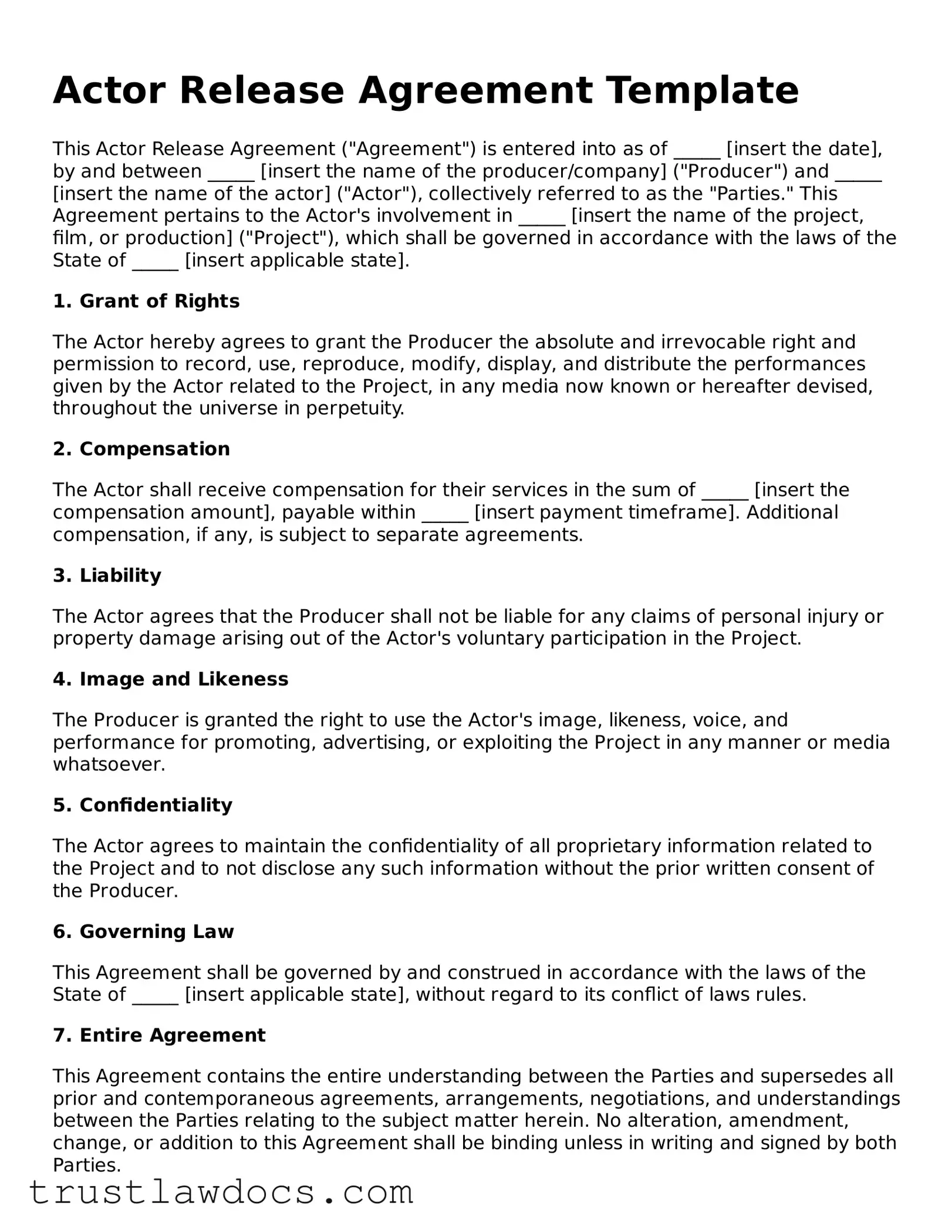Actor Release Agreement Template
This Actor Release Agreement ("Agreement") is entered into as of _____ [insert the date], by and between _____ [insert the name of the producer/company] ("Producer") and _____ [insert the name of the actor] ("Actor"), collectively referred to as the "Parties." This Agreement pertains to the Actor's involvement in _____ [insert the name of the project, film, or production] ("Project"), which shall be governed in accordance with the laws of the State of _____ [insert applicable state].
1. Grant of Rights
The Actor hereby agrees to grant the Producer the absolute and irrevocable right and permission to record, use, reproduce, modify, display, and distribute the performances given by the Actor related to the Project, in any media now known or hereafter devised, throughout the universe in perpetuity.
2. Compensation
The Actor shall receive compensation for their services in the sum of _____ [insert the compensation amount], payable within _____ [insert payment timeframe]. Additional compensation, if any, is subject to separate agreements.
3. Liability
The Actor agrees that the Producer shall not be liable for any claims of personal injury or property damage arising out of the Actor's voluntary participation in the Project.
4. Image and Likeness
The Producer is granted the right to use the Actor's image, likeness, voice, and performance for promoting, advertising, or exploiting the Project in any manner or media whatsoever.
5. Confidentiality
The Actor agrees to maintain the confidentiality of all proprietary information related to the Project and to not disclose any such information without the prior written consent of the Producer.
6. Governing Law
This Agreement shall be governed by and construed in accordance with the laws of the State of _____ [insert applicable state], without regard to its conflict of laws rules.
7. Entire Agreement
This Agreement contains the entire understanding between the Parties and supersedes all prior and contemporaneous agreements, arrangements, negotiations, and understandings between the Parties relating to the subject matter herein. No alteration, amendment, change, or addition to this Agreement shall be binding unless in writing and signed by both Parties.
Signature:
- Producer Signature: __________________________________ Date: _____ [insert date]
- Actor Signature: __________________________________ Date: _____ [insert date]
This template is provided as a general guideline and should be reviewed by legal counsel to ensure compliance with applicable law and the specific requirements of the parties involved. Edit the template as necessary to better fit your specific circumstances.
